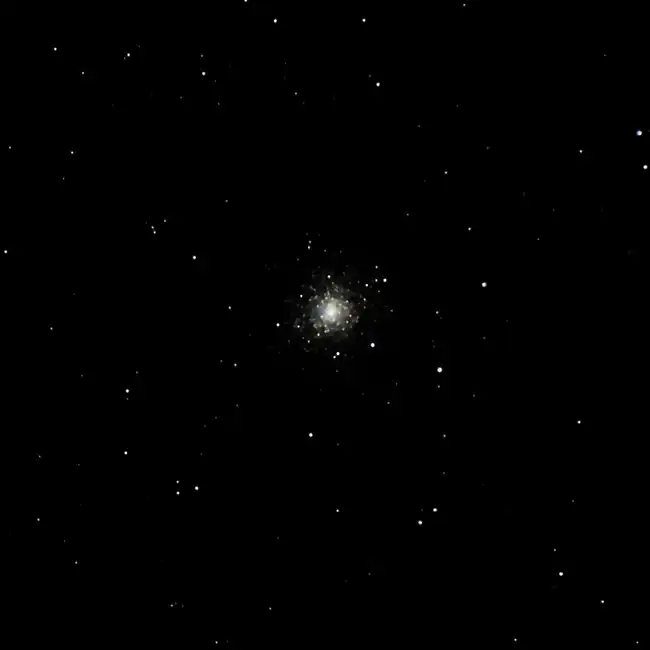Messier 75 (M75 or NGC 6864) is a fascinating globular cluster located in the constellation Sagittarius. With its compact, dense core, Messier 75 is one of the more distant globular clusters in the Messier catalog. Although not as well-known as some of the brighter clusters, it offers a rewarding experience for amateur astronomers seeking a challenge. Its dense stellar population makes it a particularly interesting object for study, even if it requires some patience to observe.
Messier 75 is a globular cluster approximately 67,500 light-years away from Earth, residing in the outer reaches of the Milky Way galaxy. It contains hundreds of thousands of stars, all bound together by gravity, and exhibits a dense, highly concentrated core. This concentration places M75 as a Class I cluster, meaning it is among the most compact of its kind. The stars within M75 are predominantly old, having formed around 13 billion years ago.
With an apparent magnitude of 8.6, M75 is not visible to the naked eye but can be observed using binoculars or a small telescope. Due to its compact nature, higher magnification may be needed to resolve individual stars, making it a more challenging but rewarding target for amateur astronomers.

When to Observe
Messier 75 is best observed during the late summer and early fall months, particularly in August and September. During this time, it is higher in the sky during evening hours, making it easier to observe. The cluster rises around sunset and remains visible through most of the night, depending on your location.
Constellation and Location
Messier 75 is located in the constellation Sagittarius, known for its rich collection of star clusters, nebulae, and the center of our galaxy. Sagittarius lies along the Milky Way’s path, offering some of the densest and most intriguing regions of the night sky. M75 is situated near the border of Sagittarius and Capricornus, but technically it belongs to Sagittarius.
How to Find Messier 75
To locate Messier 75, begin by identifying the teapot-shaped asterism within the constellation Sagittarius. M75 lies about 4.6 degrees east-northeast of the star Ascella (Zeta Sagittarii), which is part of the Teapot’s handle.
Using a star chart or a reliable app can help pinpoint the exact location, as M75 is not as prominent as some of the other nearby Messier objects. A telescope with a low to medium magnification (around 50-100x) should be able to reveal the fuzzy glow of M75, though resolving individual stars may require a larger aperture and higher magnification. Dark skies and good seeing conditions will greatly enhance the viewing experience.

History
Messier 75 was discovered by Pierre Méchain on August 27, 1780. Shortly afterward, it was added to the Messier catalog by Charles Messier on October 18, 1780. Both Méchain and Messier were actively cataloging deep-sky objects that could potentially be mistaken for comets, and M75, like many other globular clusters, appeared as a faint, comet-like smudge in the night sky.
Later observations revealed that Messier 75 was a globular cluster, with its dense core hinting at its great distance and high concentration of stars. Over the years, M75 has been the subject of various studies, particularly those focused on understanding the formation and evolution of globular clusters.
Conclusion
Messier 75 may not be the brightest or easiest globular cluster to observe, but it is a rewarding target for those willing to take on the challenge. With its dense core, remote location, and fascinating history, M75 provides a glimpse into the ancient past of our galaxy, reminding us of the dynamic and complex nature of the cosmos. Whether you’re a seasoned astronomer or just starting out, adding M75 to your observing list can deepen your appreciation for the wonders of the universe.
